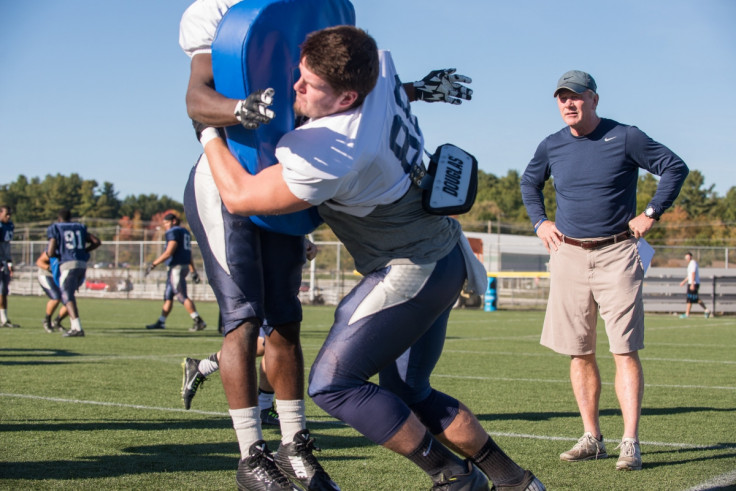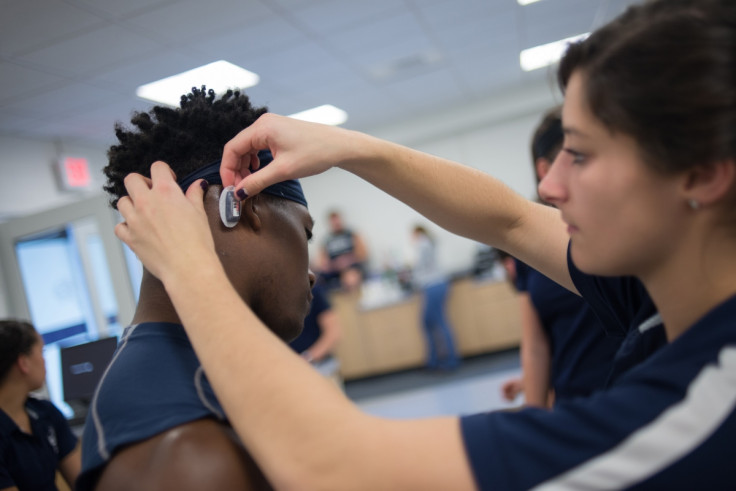Head injuries reduced by 30% in American Football when players train without helmets

American football players can reduce the number of head injuries they sustain by practicing without helmets, say researchers. A study found that behaviour can be changed by taking away the safety net of player's helmets when not playing in a competitive match.
Scientists discovered that when players do not have a helmet, they do not lead into tackles with their head as often, reducing the amount of head impacts by 30%. Players that train without helmets mould to a new tackling style designed to protect their head, which they carry on using during official matches – even with the safety blanket of a helmet.
"These helmetless drills could help to make it safer to play football," said Erik Swartz, lead researcher in the study from the University of New Hampshire. "This behaviour modification is not only about alleviating head impacts that can cause injuries now, but reducing the risk of concussive impacts that can lead to long-term complications later in life."
Safety of American Football players has been an increasingly debated topic, especially with the news that high school players suffer from widespread brain trauma. It has been estimated that high school and college level players can sustain more than 1,000 head impacts in a single season.
The study, published in the Journal of Athletic Training, was designed to see if the helmetless training idea reduces the amount of head impacts in college football players. The idea formed the Helmetless Tackling Training programme (HuTT).
The research used 50 college American Football players to test the theory. They were divided into two groups; half trained with helmets as usual, and half trained without helmets.
The study ran from before the season began, consisting of two five-minute tackling drills every week. When the season began, this was reduced to just one five minute drill per week, lasting the full three months of the season.

Head impact sensors were used on the athlete's skin to count the amount of impacts they sustain during training and competitive fixtures.
The results showed a 30% decrease in head impacts for the players that trained without their helmet. The average number of head impacts dropped from 14 before the season began, to 10 once it had finished. Whilst those that trained normally saw no overall change.
Swartz said: "The idea of taking off the football helmet during practice to reduce head impact may seem counterintuitive to the sport." He added: "But the findings show that preventing head impacts, which can contribute to spine and head injuries like concussions, may be found in behaviour modification like these drills."
© Copyright IBTimes 2025. All rights reserved.























